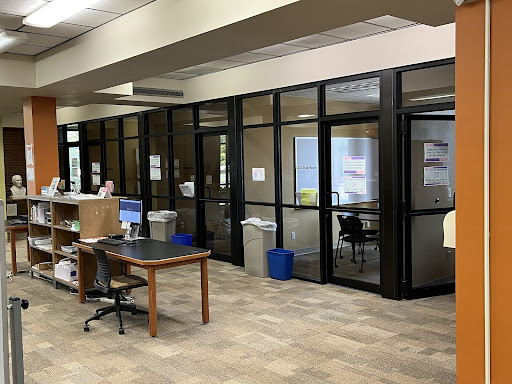According to the National Center for Education Statistics (NCES), college enrollment has been steadily declining over the past 10 years. In contrast to most other institutions, Utica University’s post-COVID enrollment trend has been stable.
Vice President for Enrollment Management Eric Sykes recently addressed the institutional, national and regional trends that are influencing college enrollment.
“Enrollment trends at Utica post-COVID have actually been quite steady, ranging between 429 and 456 students,” Sykes said. “The exception to this was the cohort that entered in 2023 which enrolled over 570 new first-time students.”
About half of South Hall is closed this semester which suggested that student enrollment was low. However, Sykes said although he was not involved in the decision, he speculated that “efficiency” played a role. He said it’s more efficient for the university to operate with a “smaller occupied footprint” rather than having empty beds dispersed throughout the residence halls.
A decline of overall student enrollment is observed nationally and locally. There are various influences that are currently impacting the higher education market.
“There’s been a great deal of media focus on student loan debt in the past few years,” Sykes said. “Utica University is actually in a good position in this regard due to the low average student loan debt of our graduates, but it has had a widespread impact on student choice and not only on which college to choose, but whether or not to pursue a degree at all.”
Other influences that have impacted student enrollment were the “difficulties of qualifying for aid that was caused by FAFSA issues” during the 2024 year and “distance from home” impacting student college choice after post-COVID years.
Utica University is taking various measures to combat low student enrollment, according to Sykes.
“We’re engaging students across a number of platforms to highlight the Academic Quality, Affordability, Student Experience (including Athletics), and the Professional Preparation our students receive,” Sykes said. “Another important consideration is retention. Ultimately retained students have a significant impact on the overall institutional enrollment.”
Sykes emphasizes that size alone should not be used to evaluate student classes.
“ A ‘good class’ isn’t judged just on size alone,” Sykes said. “There are other factors such as the mix of major interests, academic quality, demographic mix and other components that help make up a strong class.”








































































































































